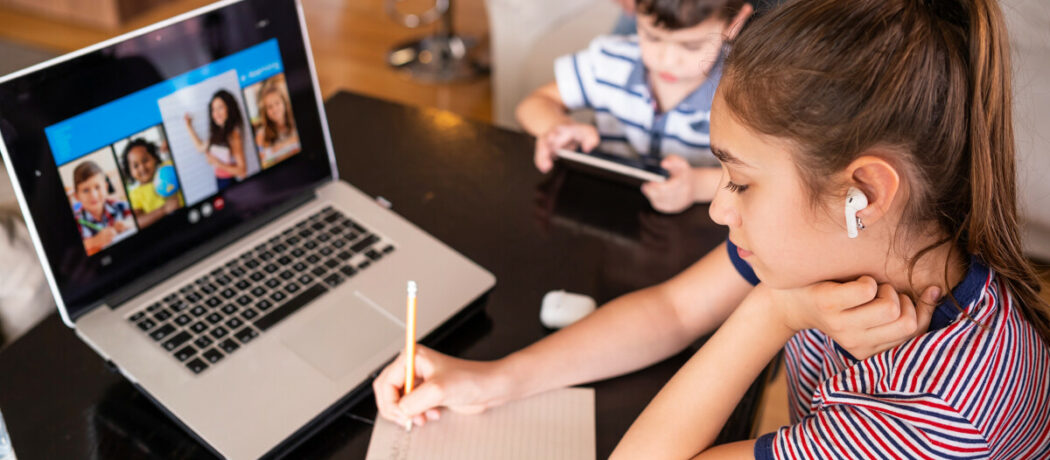Open educational resources for emergency remote teaching – a new paradigm?

Share
The Covid-19 pandemic has forced universities and other educational institutions around the world to implement emergency remote teaching (ERT). In other words, courses that had not been originally designed for distance learning have been adapted to be delivered online.
Distance learning and ERT require not only having the right technologies in place but also the correct policies. The global pandemic brought to light the importance of having policies tackling the management of intellectual property and personal data online.
Copyright issues
Most likely the educational resources (ER) that a professor uses to support ERT activities – text, images, videos, and so forth – are protected by copyright, which is a complex area of law. For example, having a lawfully acquired physical copy of a book at the university library does not authorize the person in question to make copies of it (an act of reproduction) or to upload them to an online platform (communication to the public). For each of these uses, a particular license must be obtained in advance from the copyright holder for which normally a fee must be paid.
Some uses of copyrighted ER may be covered by an exception or limitation to copyright law (for example, “fair use” in the United States) for teaching and research purposes, which in principle makes them free of charge and require no authorization from the copyright holder. However, they are limited in scope, and is not easy to know in advance what is covered by an exception and what is not.
The European Union’s recent Copyright and Digital Single Market Directive incorporated a new exception to copyright law for digital and cross-border education (art. 5). However, due to asymmetric implementation by member countries uncertainty remains high. A Damocles sword thus hangs over the heads of educators and universities that rely on exceptions and limitations for ERT.
In addition, ERT requires using external platforms and third-party software such as Zoom, Teams, Blackboard, Skype etc. Each of these platforms has its own terms and conditions (T&C), intended to minimize their exposure to different legal risks, which must be accepted first. Among them, platforms attempt to limit their liability in case of copyright infringement by the user.
A group of scholars has recently emphasized the potential dangers of the platform’s T&C to users. Most platforms may block access, terminate accounts, remove ER they consider suspicious, and even report allegedly infringing activities if they unilaterally consider an educator or any of her students may be infringing copyright.
Public domain versus open educational resources
How can universities avoid paying licensing fees for educational resources or relying on uncertain exceptions and limitations to copyright law for distance learning? One possibility would be to exclusively use ER that are in the public domain, meaning that it is no longer subject to copyright. However, because copyright can last the life of the author plus 50 to 100 after his or her death, depending on the country), ER in the public domain are old, not suitable for teaching current subjects.
Another possibility is to rely on open educational resources (OER). This term refers to any learning material, (text, video, or audio), in any format (though usually in electronic form) that has been released using an open license that guarantees what David Wiley called the five Rs:
- Retain: Permission to keep copies of the works, for storing, uploading, downloading, etc.
- Reuse: Permission to modify the intended use of a work, such as reciting a literary text in the classroom.
- Revise: Permission to adapt, modify, or alter the work, for instance, translating it to another language.
- Remix: Permission to combine the original with other works to create something new, such as a mashup or a remix.
- Redistribute: Permission to share copies of the original work or its remixes with other people, such as e-mailing them to students or colleagues.
OER thus enable educators to use, share, and adapt learning materials for their own specific teaching purposes, free of charge and free from most limitations afflicting copyrighted contents.
Copyright law, necessary to incentivize the creation of certain types of creative works, considerably limits many uses of ER in distance education that current technology enables. In that sense, is like having planes and driving them on roads. OER allows the take-off of distance-learning activities.
Probably the most well-known open license model for OER is provided by Creative Commons (CC). These licenses allow authors to decide which rights to retain and which ones to waive (“some rights reserved”, instead of “all rights reserved”). Five CC open licenses are suitable to license OER, permitting different degrees of access to suit different institutional objectives.
Big players getting on board
OER is slowly gaining traction, and is supported by UNESCO and the OECD. Repositories of OER include OpenStax, Open Textbook Library, BCcampus Open Education, and MIT Open Courseware, to name a few.
While OER may be fairly easy to implement, it may require a change of strategy. CC New Zealand provides a model policy to promote OER and open licensing at schools.
To sum up, there are some reasons why universities may want to adopt OER:
- Cost reduction: OER is free of charge.
- Mitigation of legal risks: OER avoids copyright liability issues while using platforms such as Zoom, Teams, Skype, and others.
- Improved quality of teaching: OER allows educators to tailor ER to their pedagogical needs while promoting an ethos of cooperation and openness which is the essence of learning.
- Support for social responsibility: OER promotes inclusive learning by providing quality learning materials to students that may not be able to afford copyrighted ones.
- Promotion: OER circulates with the brand name of the university or institution that created them. The more OER are disseminated, the more the university brand becomes well-known, perhaps worldwide, which may attract more students to enrol for paid or for-credit courses.
The Covid-19 pandemic has had many impacts, direct and indirect. To some educational institutions, one of them has been realizing the restrictive character of traditional copyrighted ER and third-party platforms policies when it comes to ERT and distance learning activities. There are alternatives, such as open licensing and OER. However, it seems too early to tell whether these alternatives will become mainstream.
This article is republished from The Conversation under a Creative Commons license. Read the original article.



